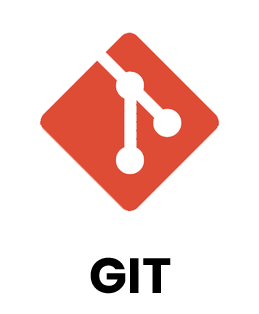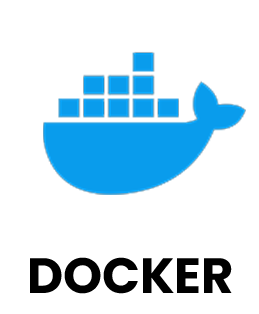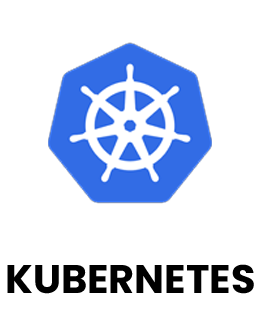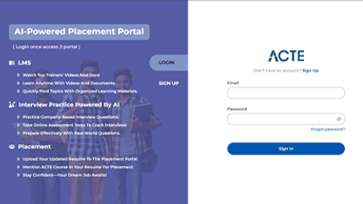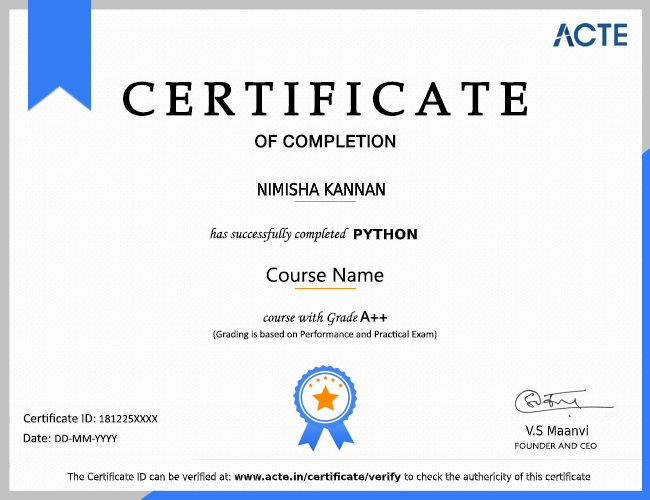For enterprises trying to scale DevOps, action is needed in 2020 to find an efficient approach for success. “Adopting a shared platform approach enables product teams to draw from an IO digital toolbox of possibilities, all the while benefiting from high standards of governance and efficiency needed for scale.”. Enroll Now with us ACTE DevOps Classroom & Online Training Course.
Well if, you’re coming to career is the main thing in your life so that DevOps career requires learning to be a skilled communicator, perhaps most especially becoming a skilled listener. DevOps also calls for a willingness to push for positive change…. as well as something that brings conventionally disconnected components in the development, deployment, and delivery of software into a single loop. Organizations are finding that DevOps is replacing their traditional IT departments
DevOps assimilates development and operations teams to improve the collaboration process. A DevOps Engineer will work with IT developers to facilitate better coordination among operations, development, and testing functions by automating and streamlining the integration and deployment processes. The field of security is peculiar because the more you automated, the higher chances of automating problems too. So all automation being done in this area to be intrinsically controlled, and this brings enormous scope for DevOps philosophy. DevOps has a great and promising future.
Absolutely, No DevOps is easy if you have the pre-requisite skills (Linux fundamental ad Shell Scripting), our trainers will make it simple easy and intresting. Chef, Puppet, OpenStack, etc. are DevOps tools and those are includes everyday System Admin skills. ... DevOps is the cross-section of software engineering and systems administration. Moreover it is easy to learn
We are happy and proud to say that we have strong relationship with over 700+ small, mid-sized and MNCs. Many of these companies have openings for DevOps developer. Moreover, we have a very active placement cell that provides 100% placement assistance to our students. The cell also contributes by training students in mock interviews and discussions even after the course completion.
Both are Good and both are having their own Specialty as well as both has future. DevOps is a combination of software development and operations and as its name suggests, it's a melding of these two disciplines in order to emphasize communication, collaboration, and cohesion between the traditionally separate developer and IT operations teams.DevOps helps an organization deploy software more frequently, while maintaining service stability and gaining the speed necessary for more innovation.
DevOps brings a set of principles and values to promote collaborative development and deployment approach and it can be achieved by using certain tools and processes. Hence DevOps is neither easy nor difficult, it depends on how you perceive it.
For a minimum understanding of Devops for beginners, it requires only 10–15 hours. To get a medium level understanding of Devops will require a minimum of 40–60 hours. For high-level understanding, it requires more than 2 projects.
Yes, Of course you can. Just like a person without any IT experience can enter programming, System Administration, Quality Assurance, Hardware etc……..There is always an entry point to IT and DevOps is always special. And just like those other fields you will have a steep DevOps as a learning curve.so make use of it…..
Our courseware is designed to give a hands-on approach to the students in DevOps. The course is made up of theoretical classes that teach the basics of each module followed by high-intensity practical sessions reflecting the current challenges and needs of the industry that will demand the students’ time and commitment.
DevOps Is Quite intresting
Definitely, it's a good choice if you want to learn DevOps. Many big IT companies such as ADP, eBay, GE, ING, Intuit, PayPal, Splunk, Uber, JP Morgan are looking for DevOps experts…. DevOps is more than what your resume can effectively communicate, namely the so-called soft skills. And it and good to take devops in 2020
Yes, devOps is currently having a huge demand in IT sectors, with no signs of slowing down. According to the 2020 State of DevOps Report, organizations using DevOps practices could deploy code up to 30 times more frequently than their competitors. ... According to IT survey the average salary for a DevOps engineer is a juicy $100,000 per year.
Top to be a Better Agility, Effective and faster deployment of apps and software. ..DevOps- a perfect source for earning money and a faster business development cycle. ...Boost product quality. ...Lower IT staff and costs. ...Become a valuable asset for the company. and You will get the chance to work with professional developers
However, your qualifications, experience, and interest also matter. With the right talent and combination, there is a good chance that an experienced DevOps candidate can advance into senior technical or management roles in the future.
DevOps Market Overview:
DevOps offers solutions to various applications, such as application management, continuous delivery, software development testing, fast forward product innovation, and others. Furthermore, it helps to mechanize complex IT processes by delivering high-end benefits to the users.
Gartner Identifies the Top 10 Trends Impacting Infrastructure and Operations for 2020:
Trend No. 1: Automation Strategy Rethink
Gartner has detected a significant range of automation maturity across clients: Most organizations are automating to some level, in many cases attempting to refocus staff on higher-value tasks. However, automation investments are often made without an overall automation strategy in mind.
As vendors continue to pop up and offer new automation options, enterprises risk ending up with a duplication of tools, processes and hidden costs that culminate to form a situation where they simply cannot scale infrastructure in the way the business expects, We think that by 2025, top performing leaders will have employed a dedicated role to steward automation forward and invest to build a proper automation strategy to get away from these ad hoc automation issues.
Trend No. 2: Hybrid IT Versus Disaster Recovery (DR) Confidence
Today infrastructure is in many places colocation, on-premises data centers, edge locations, and in cloud services. The reality of this situation is that hybrid IT will seriously disrupt your incumbent disaster recover (DR) planning if it has not already.
Often, organizations heavily rely on as a service (aaS) offerings, where it is easy to overlook the optional features necessary to establish the correct levels of resilience. For instance,the root cause of 90% of cloud-based availability issues will be the to fully use cloud service provider native redundancy capabilities.
Organizations are left potentially exposed when their heritage DR plans designed for traditional systems have not been reviewed with new hybrid infrastructures in mind. Resilience requirements must be evaluated at design stages rather than treated as an afterthought two years after deployment.
Trend No. 3: Scaling DevOps Agility
For enterprises trying to scale DevOps, action is needed in 2020 to find an efficient approach for success. Although individual product teams typically master DevOps practices, constraints begin to emerge as organizations attempt to scale the number of DevOps teams.
We believe that the vast majority of organizations that do not adopt a shared self-service platform approach will find that their DevOps initiatives simply do not scale. Adopting a shared platform approach enables product teams to draw from an IO digital toolbox of possibilities, all the while benefiting from high standards of governance and efficiency needed for scale.
Trend No. 4: Infrastructure Is Everywhere So Is Your Data
We introduced the theme of infrastructure is everywhere that the business needs it. As technologies like AI and machine learning (ML) are harnessed as competitive differentiators, planning for how explosive data growth will be managed is vital, In fact, by 2022, 60% of enterprise IT infrastructures will focus on centers of data, rather than traditional data centers, according to Gartner.
The attraction of moving selected workloads closer to users for performance and compliance reasons is understandable. Yet we are rapidly heading toward scenarios where these same workloads run across many locations and cause data to be harder to protect. Cascade effects of data movement combined with data growth will hit IO folks hard if they are not preparing now.
Trend No. 5: Overwhelming Impact of IoT
Successful IoT projects have many considerations, and no single vendor is likely to provide a complete end-to-end solution. IO must get involved in the early planning discussions of the IoT puzzle to understand the proposed service and support model at scale. This will avoid the cascade effect of unforeseen service gaps, which could cause serious headaches in future.
Trend No. 6: Distributed Cloud
Distributed cloud is defined as the distribution of public cloud services to different physical locations, while operation, governance, updates and the evolution of those services are the responsibility of the originating public cloud provider.
Emerging options for distributed cloud will enable IO teams to put public cloud services in the location of their choosing, which could be really attractive for leaders looking to modernize using public cloud.
Points out that the nascent nature of many of these solutions means a wide range of considerations must not be overlooked. Enthusiasm for new services like AWS Outposts, Microsoft Azure Stack or Google Anthos must be matched early on with diligence in ensuring the delivery model for these solutions is fully understood by IO teams who will be involved in supporting them.
Trend No. 7: Immersive Experience
Customer standards for the experience delivered by IO capabilities are higher than ever, Previous value adds like seamless integration, rapid responses and zero downtime are now simply baseline customer expectations.
Warned leaders that as digital business systems reach deeper into IO infrastructures, the potential impact of even the smallest of IO issues expands. If the customer experience is good, you might grow in mind and market share over time; but if the experience is bad, the impacts are immediate and could potentially impact corporate reputation rather than just customer satisfaction.
Trend No. 8: Democratization of IT
Low-code is a visual development approach to application development that is becoming increasingly appealing to business units. It enables developers of varied experience levels to create applications for web and mobile with little or no coding experience, largely driving a self-service model for business units instead of turning to central IT for a formal project plan.
As low-code becomes more commonplace, the complexity of the IT portfolio increases. And when low-code approaches are successful, IO teams will eventually be asked to provide service. Starting now, it is in IO leaders best interest to embed their support and exert influence over things that will inevitably affect their teams, as well as the broader organization.
Trend No. 9: Networking Whats Next?
In many cases, network teams have excelled in delivering highly available networks, which is often achieved through cautious change management. At the same time, the pace of change is tough for IO to keep up with, and there are no signs of things slowing down.
The continued pressure to keep the lights shining brightly has created unexpected issues for the network. Cultural challenges of risk avoidance, technical debt and vendor lock-in all mean that some network teams face a tough road ahead. 2020 needs to be the time for cultural shifts, as investment in new network technologies is only part of the answer.
Trend No. 10: Hybrid Digital Infrastructure Management (HDIM)
As the realities of hybrid digital infrastructures kick in, the scale and complexity of managing them is becoming a more pressing issue for IT leaders.
Organizations should investigate the concept of HDIM, which looks to address the primary management issues of a hybrid infrastructure. This is an emerging area, so organizations should be wary of vendors who say they have tools that offer a single solution to all their hybrid management issues today. Over the next few years, though, we expect vendors focused on HDIM to deliver improvements that enable IT leaders to get the answers they need far faster than they can today.



